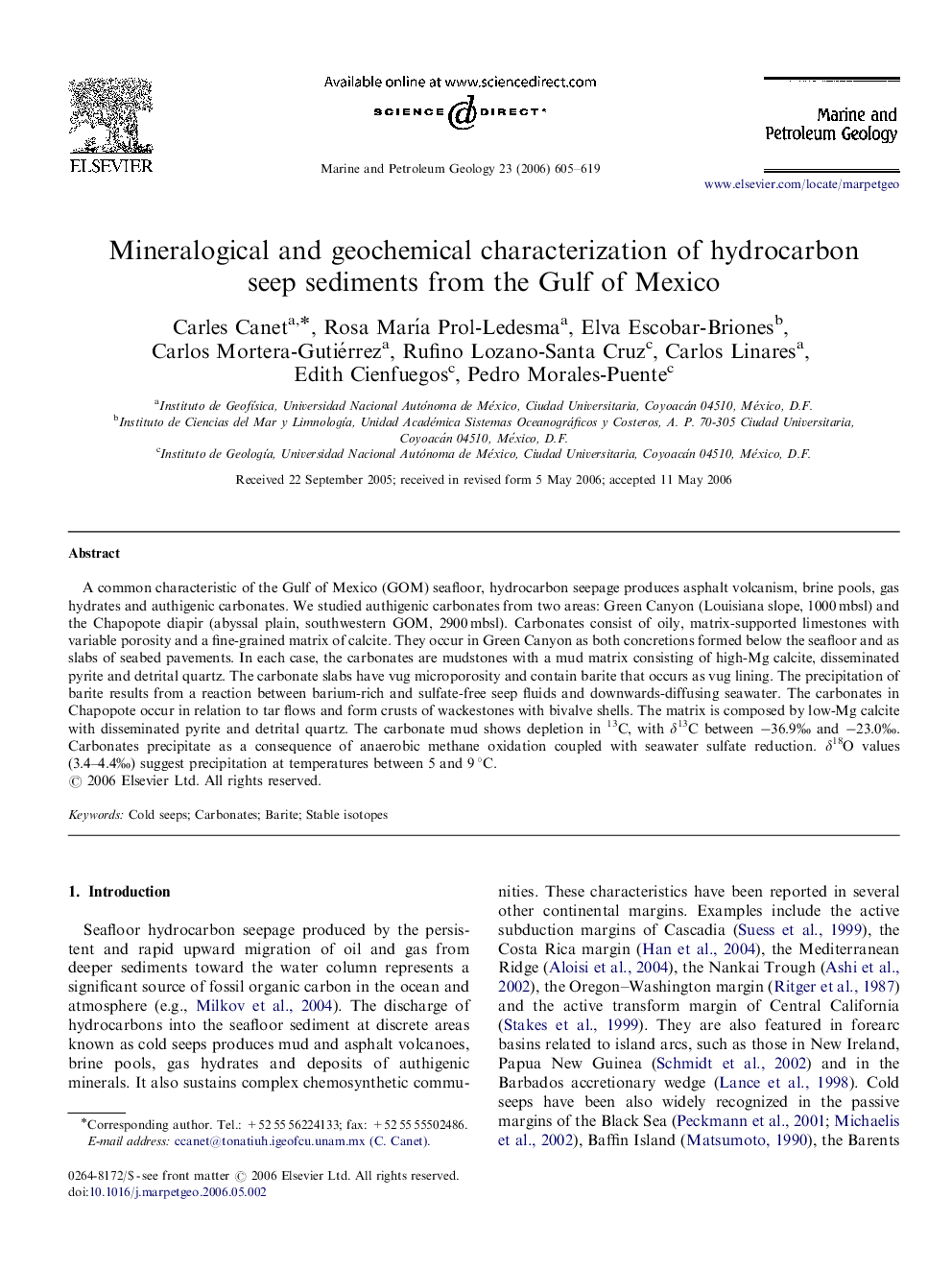| کد مقاله | کد نشریه | سال انتشار | مقاله انگلیسی | نسخه تمام متن |
|---|---|---|---|---|
| 4696542 | 1351684 | 2006 | 15 صفحه PDF | دانلود رایگان |

A common characteristic of the Gulf of Mexico (GOM) seafloor, hydrocarbon seepage produces asphalt volcanism, brine pools, gas hydrates and authigenic carbonates. We studied authigenic carbonates from two areas: Green Canyon (Louisiana slope, 1000 mbsl) and the Chapopote diapir (abyssal plain, southwestern GOM, 2900 mbsl). Carbonates consist of oily, matrix-supported limestones with variable porosity and a fine-grained matrix of calcite. They occur in Green Canyon as both concretions formed below the seafloor and as slabs of seabed pavements. In each case, the carbonates are mudstones with a mud matrix consisting of high-Mg calcite, disseminated pyrite and detrital quartz. The carbonate slabs have vug microporosity and contain barite that occurs as vug lining. The precipitation of barite results from a reaction between barium-rich and sulfate-free seep fluids and downwards-diffusing seawater. The carbonates in Chapopote occur in relation to tar flows and form crusts of wackestones with bivalve shells. The matrix is composed by low-Mg calcite with disseminated pyrite and detrital quartz. The carbonate mud shows depletion in 13C, with δ13C between −36.9‰ and −23.0‰. Carbonates precipitate as a consequence of anaerobic methane oxidation coupled with seawater sulfate reduction. δ18O values (3.4–4.4‰) suggest precipitation at temperatures between 5 and 9 °C.
Journal: Marine and Petroleum Geology - Volume 23, Issue 5, June 2006, Pages 605–619